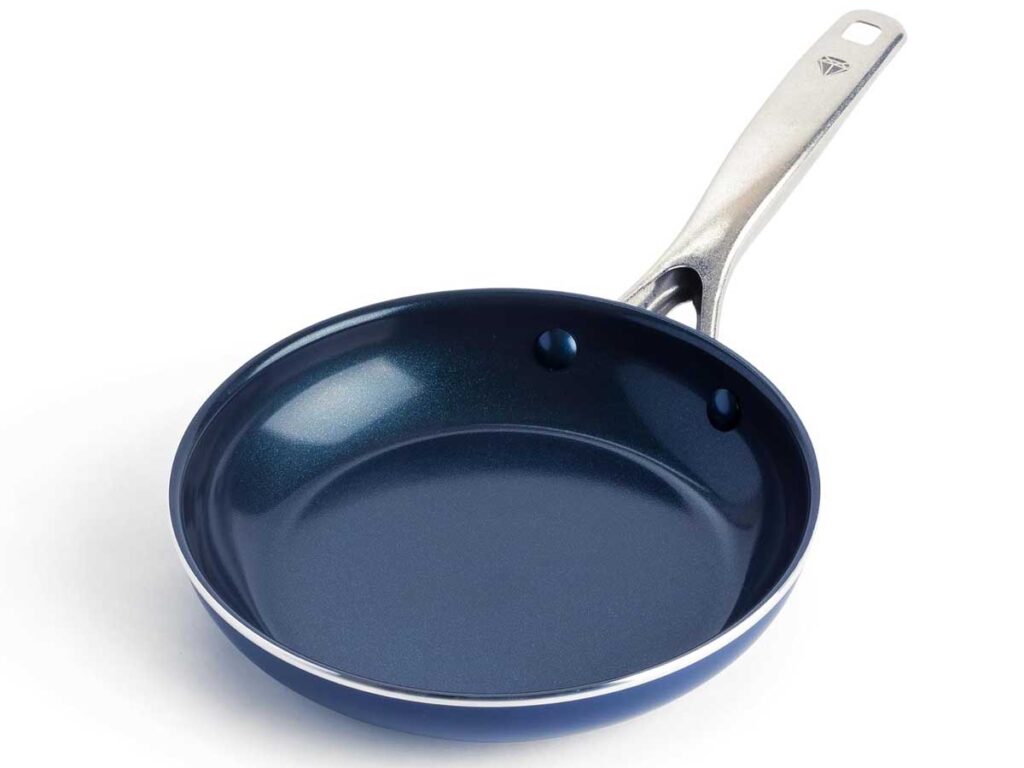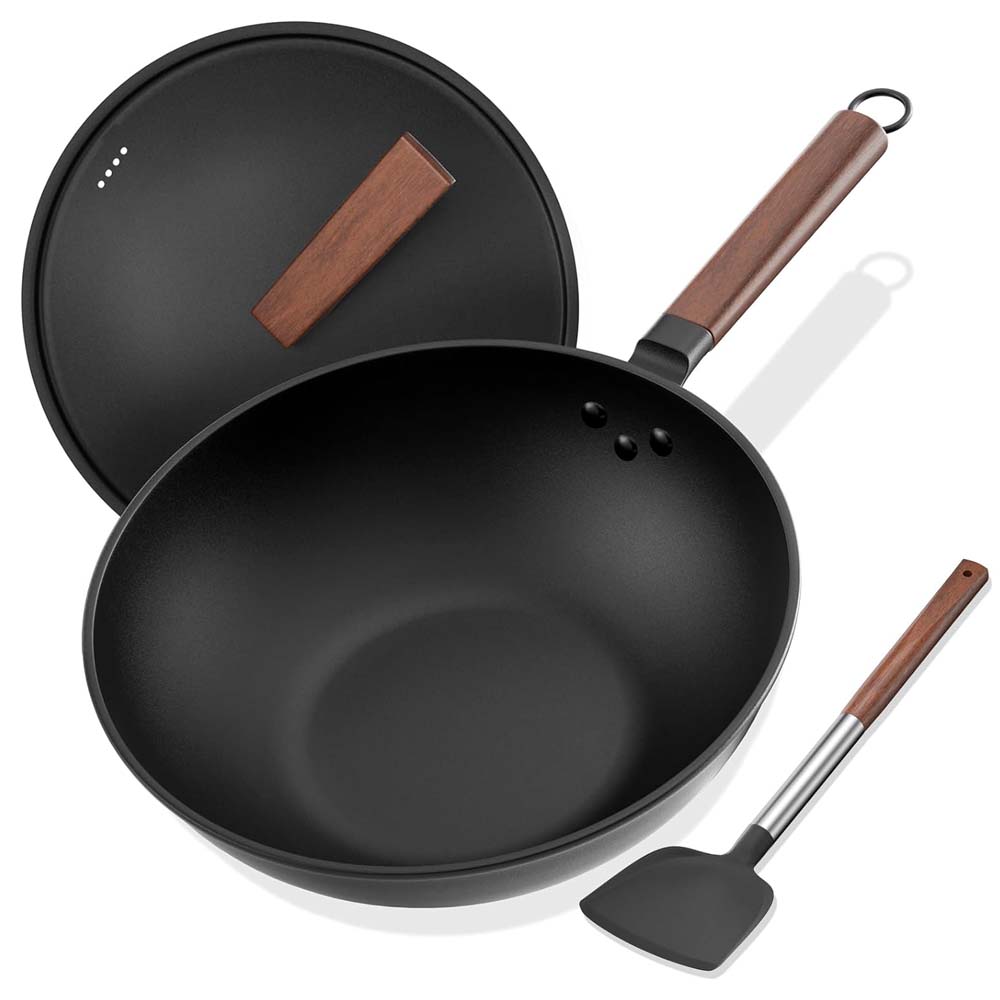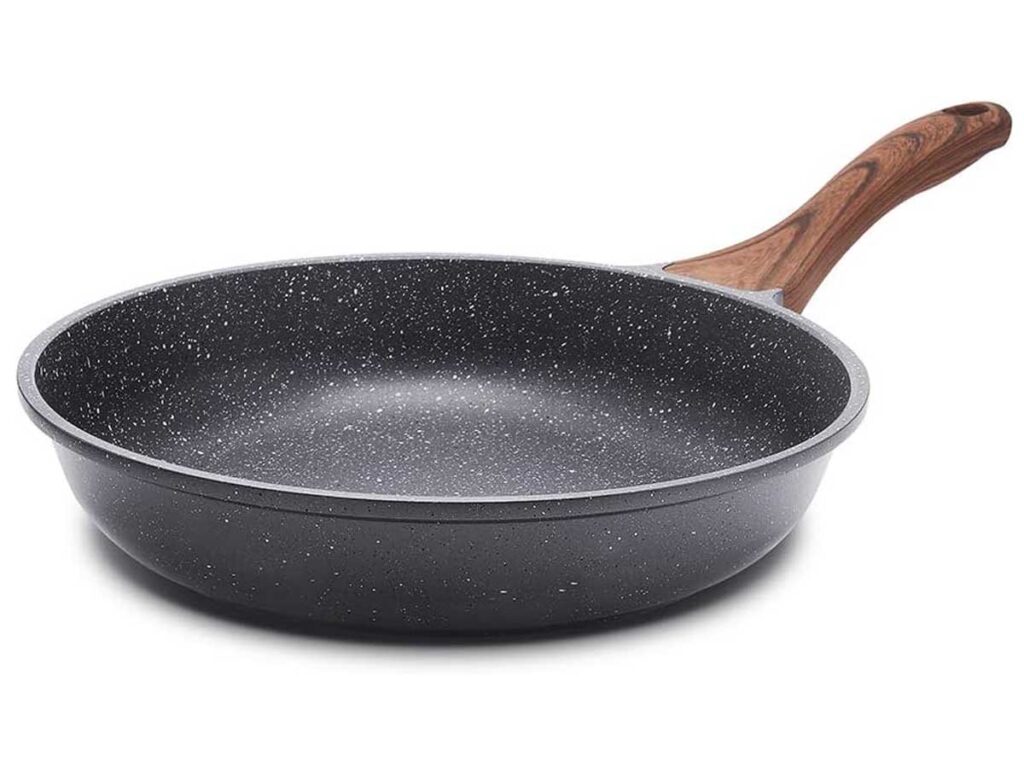Why Use a Wok Instead of a Frying Pan? Top Reasons Explained

Why use a wok instead of a frying pan? Many cooks favor the wok for its versatility, cooking efficiency, and unique features that enhance various cooking techniques. The benefits of using a wok are evident in its ability to handle stir-fry, steaming, and deep-frying effortlessly.
Many cooks, both professional and home-based, prefer using a wok over a frying pan. Today, I’ll explain why use a wok instead of a frying pan and share the many benefits of using a wok.
What is a Wok and a Frying Pan?
Understanding the fundamental differences between a wok and a frying pan starts with their shapes, materials, and typical uses.
A wok is characterized by its deep, sloped sides, making it ideal for high-heat cooking techniques like stir-frying. Traditionally made from carbon steel or cast iron, the wok’s shape allows for even heat distribution and the ability to toss ingredients quickly and efficiently. It’s not limited to stir-frying; you can also steam, deep-fry, and even smoke foods in a wok.

On the other hand, a frying pan (also known as a skillet) has a flat bottom and low, slightly sloped sides. Commonly made from stainless steel, non-stick coatings, or cast iron, frying pans are used extensively in Western cooking. They are perfect for frying, searing, and browning foods, offering a broad, even cooking surface.

Both these cookware items have their own unique strengths and are essential kitchen tools, but their designs and intended uses make them suitable for different cooking techniques.
Historical Origins
The wok has a rich history that dates back over 2,000 years to China. Its development was driven by the need to cook food quickly over high heat, a method well-suited to the Chinese fuel-conserving stoves of the time. The wok evolved from a simple, rounded cooking vessel to the versatile pan we know today, indispensable in Asian cuisine.
In contrast, the frying pan has its roots in ancient Mesopotamia and Greece. Early frying pans were made from materials like clay and bronze. Over time, the design evolved to include handles and flatter surfaces, catering to the cooking methods of these regions. The history of the frying pan is intertwined with the development of Western culinary techniques, which often involve frying and searing at moderate temperatures.
Understanding the history of the wok and the history of the frying pan helps appreciate their unique contributions to global cooking traditions.
Physical Differences and Material
Understanding the physical and material differences between a wok and a frying pan is crucial.
Wok
- Shape: The wok has deep, sloped sides that allow for easy tossing and stirring of ingredients. This shape helps with even heat distribution.
- Materials: Most woks are made from carbon steel, which is lightweight and has excellent heat retention. Some are also made from cast iron, which is heavier but holds heat well.
- Weight: A carbon steel wok is generally light, making it easy to handle and maneuver during cooking. Cast iron woks are heavier but offer superior heat retention.
- Heat Retention: Due to its construction, a carbon steel wok heats up quickly and retains high temperatures, making it ideal for fast cooking methods.

Frying Pan
- Shape: A frying pan has a flat bottom and low, slightly sloped sides. This design provides a broad, even cooking surface.
- Materials: Frying pans are commonly made from stainless steel, cast iron, or have a non-stick coating. Stainless steel is durable and resistant to rust, while cast iron provides excellent heat retention.
- Weight: Stainless steel frying pans are generally heavier than carbon steel woks but lighter than cast iron ones. Cast iron frying pans are the heaviest but offer unmatched heat retention.
- Heat Distribution: Frying pans distribute heat evenly across the flat surface, making them suitable for cooking techniques that require consistent heat, such as searing and browning.

By understanding these wok materials and frying pan materials, you can see why each is suited to different cooking styles and preferences.
Heat Distribution and Cooking Techniques
Wok
- Heat Distribution: A wok heats up quickly and distributes heat evenly across the bottom and up the sides. This design allows for multiple temperature zones within the same pan.
- Cooking Techniques:
- Stir-frying: The wok’s high heat and sloped sides make it perfect for stir-frying, allowing ingredients to cook quickly while being continuously tossed.
- Deep-frying: The deep sides can hold more oil, making it suitable for deep-frying small batches of food.
- Steaming: By placing a rack inside the wok and adding water, you can steam vegetables, dumplings, and fish.
Frying Pan
- Heat Distribution: Frying pans provide even heat across their flat surface, making them ideal for cooking techniques that require a consistent temperature.
- Cooking Techniques:
- Searing: The even heat distribution is perfect for searing meat, creating a caramelized crust without burning.
- Browning: Whether it’s browning onions or other ingredients, the frying pan excels due to its wide, even cooking surface.
- Sautéing: The low sides allow for easy access to the food, making it ideal for sautéing vegetables or small pieces of meat.
Understanding these differences in heat distribution and cooking techniques helps in selecting the right tool for the job, ensuring better results in your cooking.
Flavor Development
When it comes to flavor, the wok and the frying pan each bring their own unique qualities to the table.
Wok Hei
One of the most prized characteristics of cooking with a wok is achieving wok hei, which translates to “the breath of the wok.” This term describes the distinct smoky flavor and aroma that comes from cooking over very high heat.
The intense heat causes the oil and food to ignite slightly, imparting a unique, complex flavor that’s hard to replicate with other cookware. This flavor in a wok is particularly prominent in stir-fried dishes and is a hallmark of great Chinese cooking.
Maillard Reaction
In contrast, the frying pan excels at developing rich, caramelized flavors through the Maillard reaction. This chemical reaction occurs when proteins and sugars in food are exposed to heat, leading to browning and the development of complex flavors. The Maillard reaction is especially important for searing meats and browning vegetables, providing a depth of flavor that’s highly valued in Western cuisine.
Both cooking methods offer unique ways to enhance the taste of your dishes. The wok hei in a wok and the Maillard reaction in a frying pan each bring distinct and desirable flavors to your food.
Versatility and Cooking Capacity
Wok
The versatility of a wok is one of its standout features. Thanks to its large size and deep, sloped sides, a wok can handle various cooking methods and large volumes of food. This makes it perfect for:
- Stir-frying: The high sides allow for easy tossing of ingredients without spilling.
- Deep-frying: The depth of the wok accommodates enough oil for deep-frying.
- Steaming: With the addition of a rack, you can steam vegetables, dumplings, and fish.
- Boiling: The large capacity makes it suitable for boiling soups or large quantities of food.
Frying Pan
The frying pan is also versatile but in different ways. It is most effective for:
- Searing and Browning: The flat, even surface is ideal for creating a good sear on meats and browning ingredients evenly.
- Sautéing: The low sides make it easy to move ingredients around quickly.
- Cooking Smaller Batches: Its size is perfect for smaller meals or delicate items that require precise heat control.
In terms of cooking capacity, a wok can handle larger batches and a variety of cooking methods, making it a great all-purpose tool. A frying pan, while versatile, is better suited for more controlled, smaller-scale cooking.
Ease of Use and Maintenance
Wok
Using and maintaining a wok requires some special considerations:
- Seasoning: A carbon steel or cast iron wok needs to be seasoned before use. This process involves coating the pan with oil and heating it to create a non-stick surface.
- Careful Maintenance: To prevent rust, woks should be dried thoroughly after washing and occasionally re-seasoned. They should not be soaked in water or put in the dishwasher.
Frying Pan
Frying pans are generally easier to use and maintain:
- Non-Stick Coatings: Many frying pans come with non-stick surfaces that require minimal oil and are easy to clean.
- Durability: Stainless steel and cast iron pans are durable and require less maintenance than carbon steel woks. Cast iron pans do need to be seasoned, but they are less prone to rust if cared for properly.
- Ease of Cleaning: Most frying pans can be cleaned with regular dish soap and water. Non-stick pans should be handled with care to avoid scratching the coating.
When it comes to ease of use and maintenance, frying pans generally have the upper hand due to their straightforward care requirements. However, the cooking benefits of a well-maintained wok are well worth the extra effort for many chefs.
FAQs: Why Use a Wok Instead of a Frying Pan
Wok vs. Frying Pan: Why a Wok is the Better Choice
In summary, a wok offers distinct benefits such as excellent heat distribution, high-heat capability, and versatility for various cooking methods.
These features make it ideal for stir-frying, steaming, and deep-frying.
On the other hand, a frying pan is great for even heat distribution and is perfect for searing, browning, and sautéing.
While each has its strengths, choosing between them depends on the cooking styles and dishes you prefer.
Understanding the wok benefits and frying pan benefits helps in making an informed decision for your kitchen needs.
Stay connected with Kit Yum for more knowledge base information.
